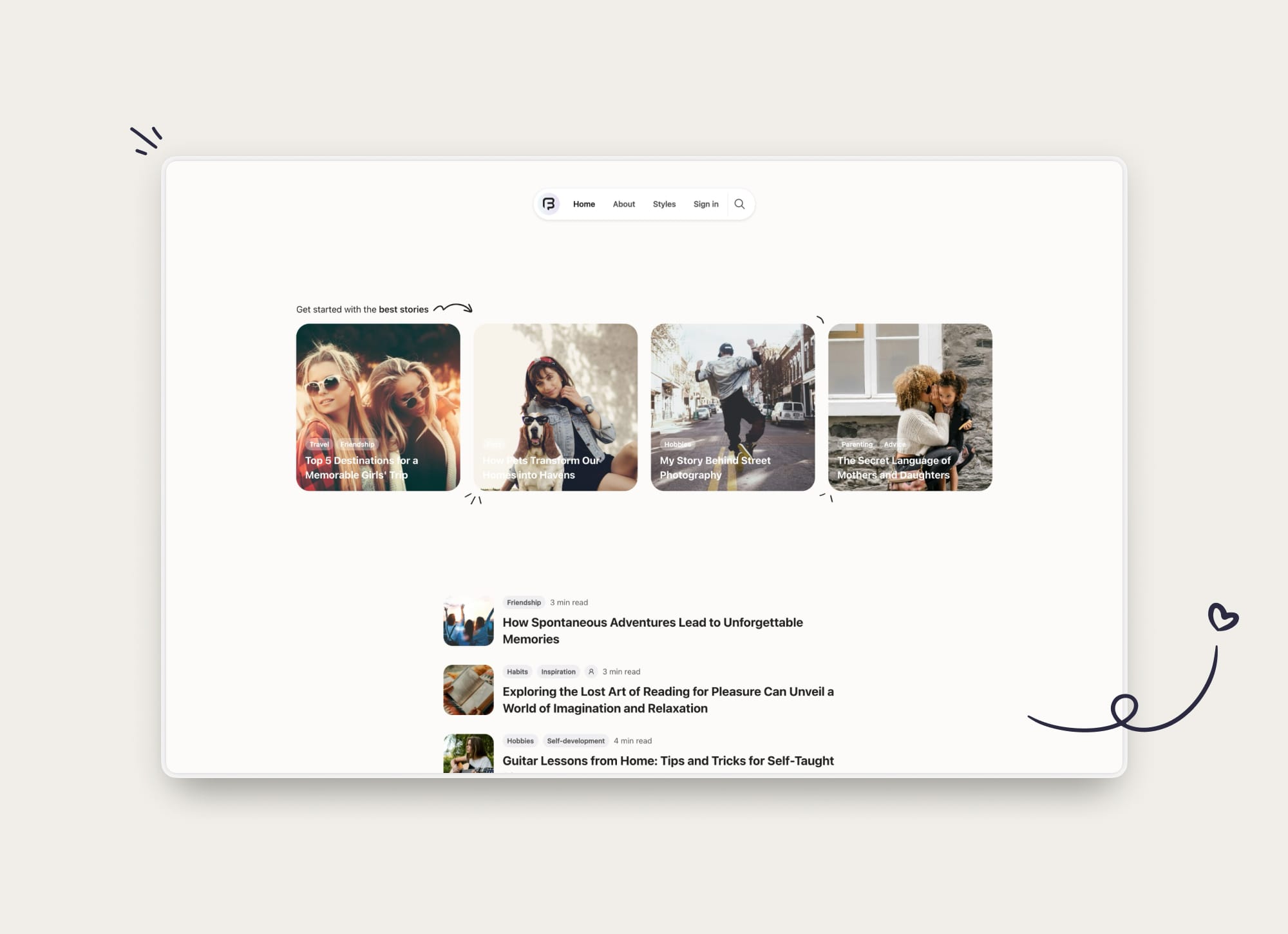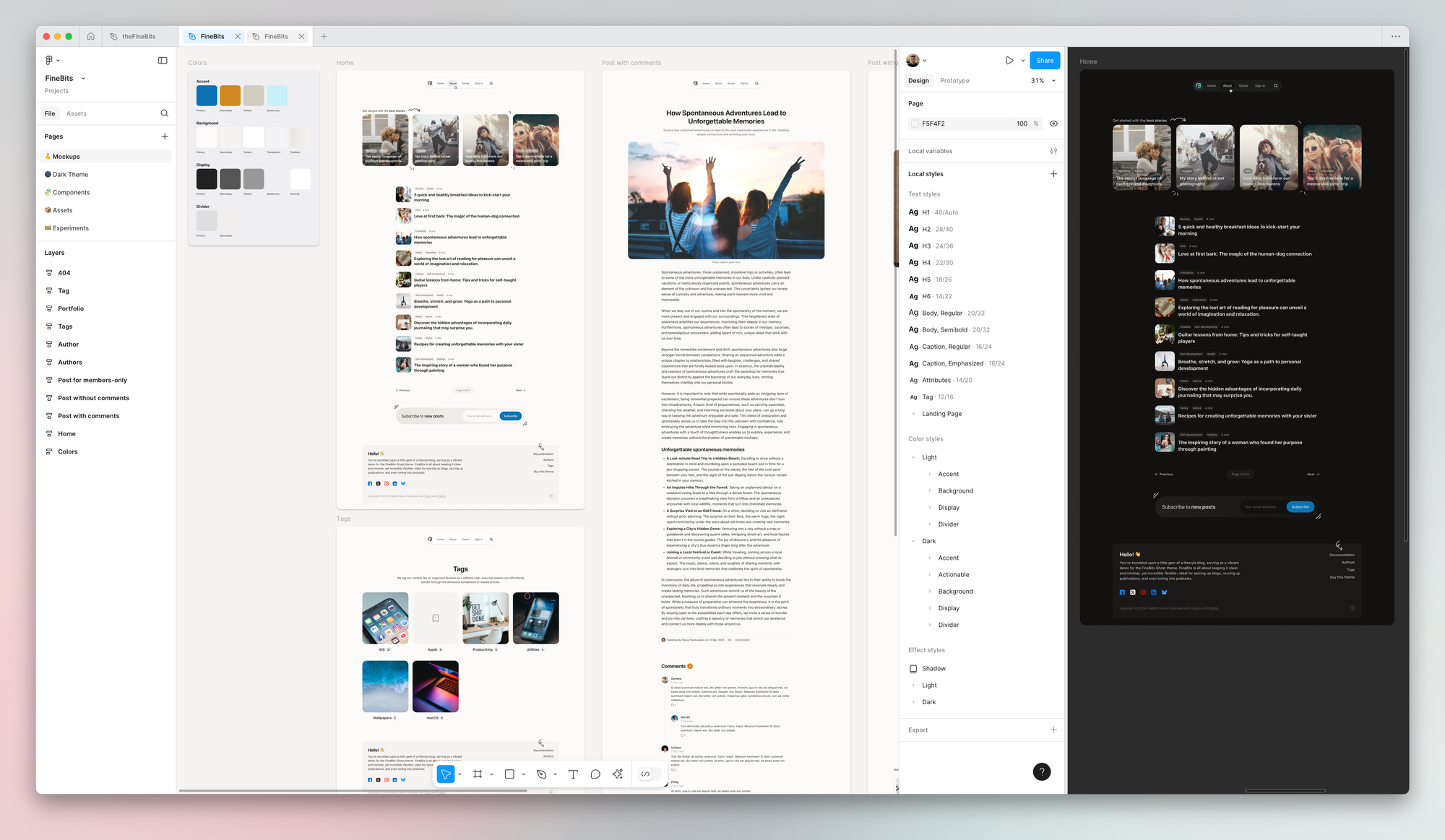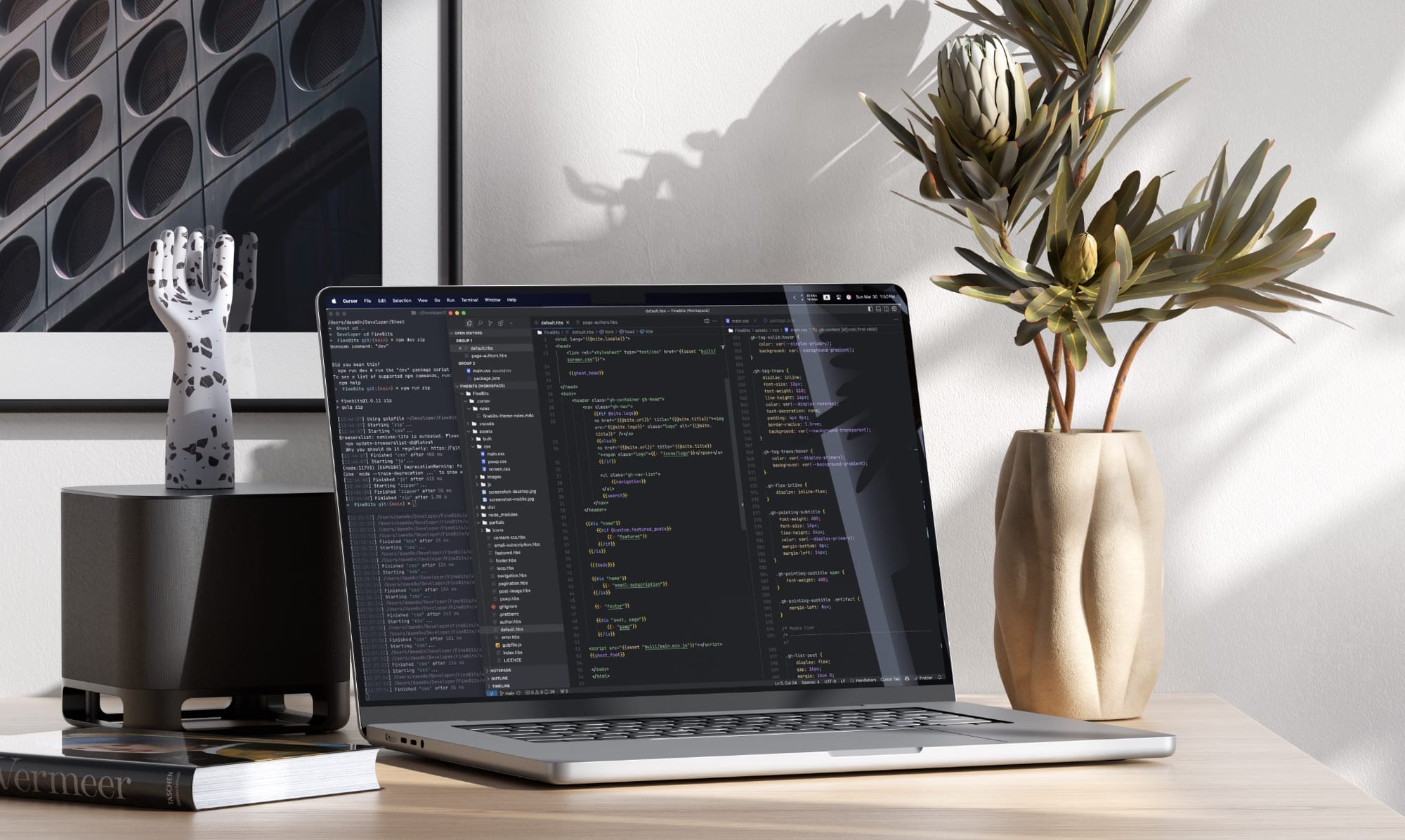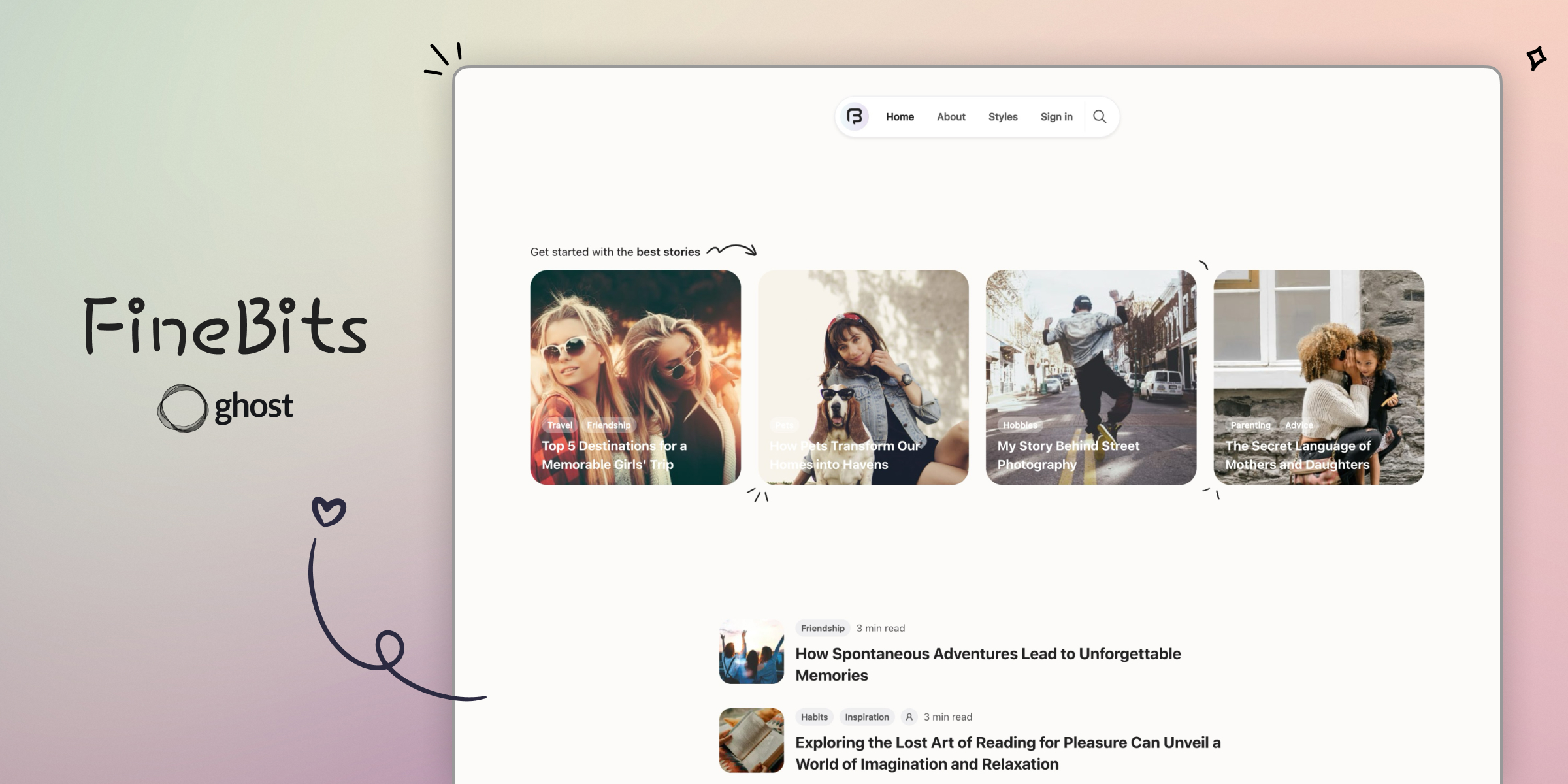theFineBits: Turning a Solo Project into a Premium Ghost Brand
Explore how I designed, developed, and sold my first Ghost CMS theme—FineBits—launching a new creative studio along the way.
Project Snapshot
- Studio: theFineBits
- Product: FineBits (Ghost CMS Theme)
- Role: Designer, Developer, Founder
- Focus Areas: Design Systems, Frontend Development, Theme Architecture, Indie Sales
- Highlights: Responsive Design, Figma Prototyping, Handlebars Integration, Ghost Marketplace Approval
Problem & Context
After years of designing for platforms like WordPress and ExpressionEngine, I decided to explore Ghost—an open-source CMS known for its clean writing experience and elegant interface. While Ghost had many solid themes, none truly matched the blend of minimalism and personality I envisioned. I saw an opportunity not just to create a theme for my own blog but to launch a product others could use and trust. That’s how FineBits was born—and with it, my design studio, theFineBits.
My Role
This was a one-person project: from research, design, and development, to launch, support, and iteration. I wore every hat—designer, developer, project manager, and customer support agent. My goal was to design a premium theme that felt custom-crafted yet scalable, intuitive yet flexible enough for personal blogs and small publications alike.
Process & Approach
Starting with a design-first mindset
I kicked off the project in Figma, defining typography, layout structure, and color themes with a mobile-first approach. Having no client to report to allowed me to fully explore different styles before settling on something clean, functional, and slightly playful.
From HTML to Handlebars
Once the blueprint was ready, I coded the theme using semantic HTML and modular CSS. Ghost uses Handlebars as its templating engine, which meant converting static HTML into reusable, dynamic templates—components like post listings, tag pages, and author views.
Ghost Dev Environment
Developing locally with Ghost took some extra setup (Node.js, Gulp, NPM), but once the workflow clicked, it made iterating a breeze. I was able to preview every change instantly and troubleshoot quickly, which was crucial in fine-tuning the final product.
Managing the solo grind
Working solo meant I had to be highly organized. I used Todoist to break the project down into sprints and track what made the cut for version 1. I also created a backlog of ideas to avoid feature creep and keep my initial launch manageable.

Outcome & Impact
After a soft beta launch and several iterations, FineBits was approved and listed in the official Ghost Marketplace. The first sale came just days after launch—and while it wasn’t life-changing money, it was validating in the best way possible.
People were buying it, using it, and reaching out with feedback. I refined the documentation, fixed bugs, and started building a small, supportive customer base. Each interaction helped shape what FineBits would become: a reliable, elegant theme that felt both personal and professional.

What’s Next
FineBits was just the beginning. I’m now working on a second theme called FlexiBits—a minimal yet highly flexible theme designed to adapt to a wider range of publishing needs.
While FineBits focuses on simplicity and structure, FlexiBits was born from user feedback asking for more layout control, personalization options, and creative freedom. It’s not a direct successor, but rather a complementary theme that serves a different purpose. The goal is to offer a cleaner starting point for those who want minimal aesthetics without sacrificing flexibility.
With theFineBits, I aim to grow a collection of carefully designed Ghost themes that each solve different problems while staying true to a high standard of quality and attention to detail.

